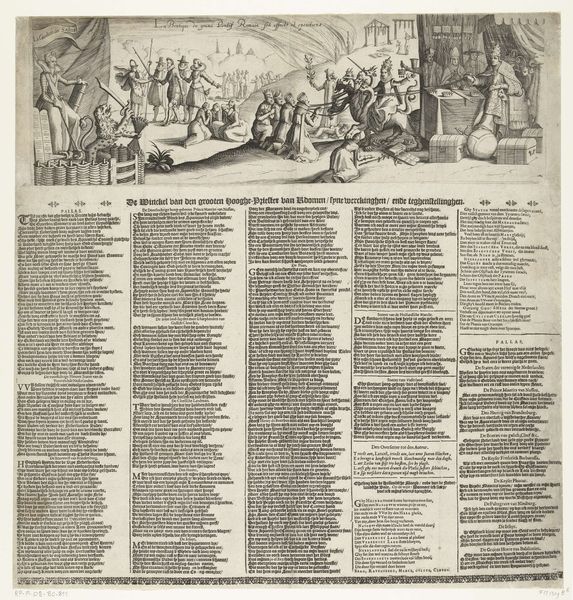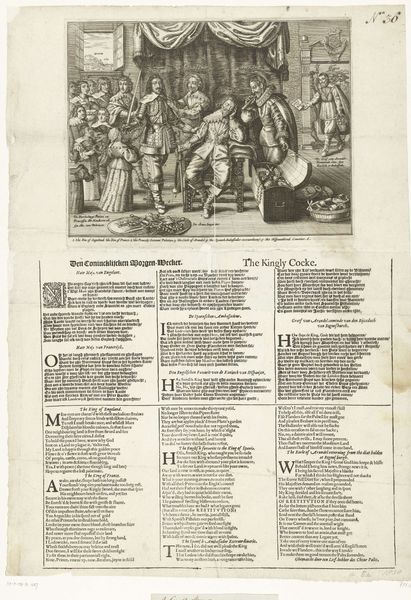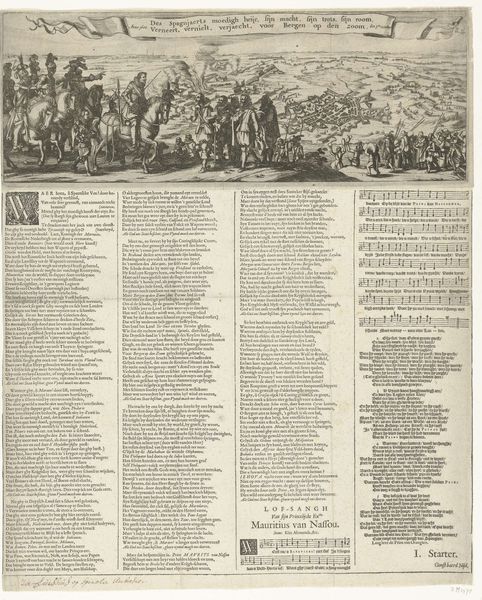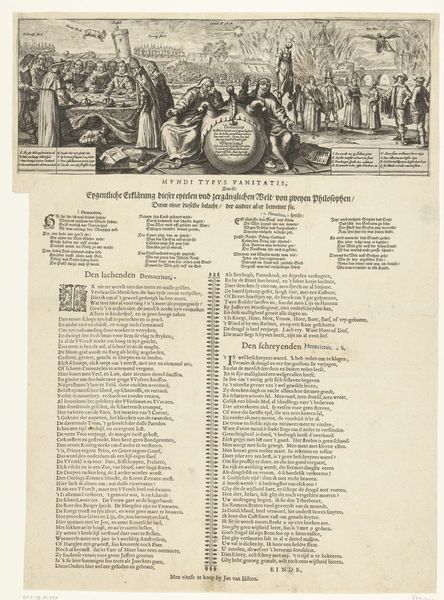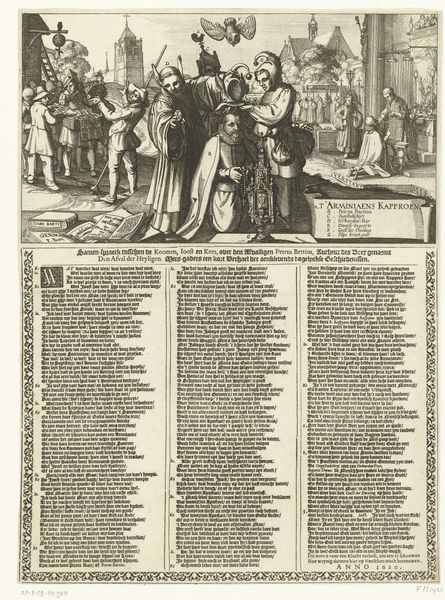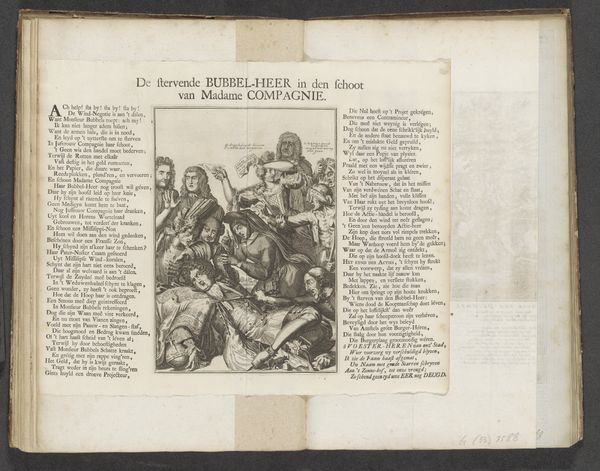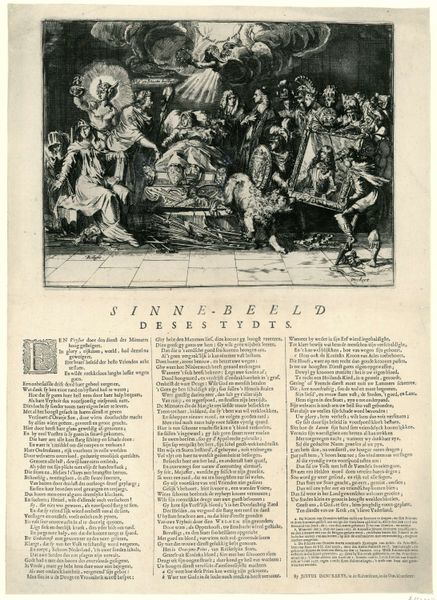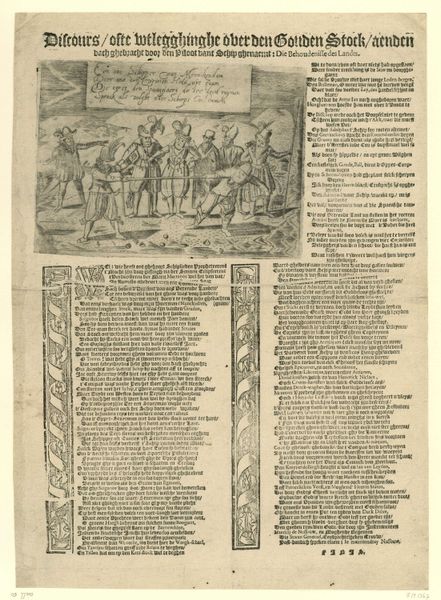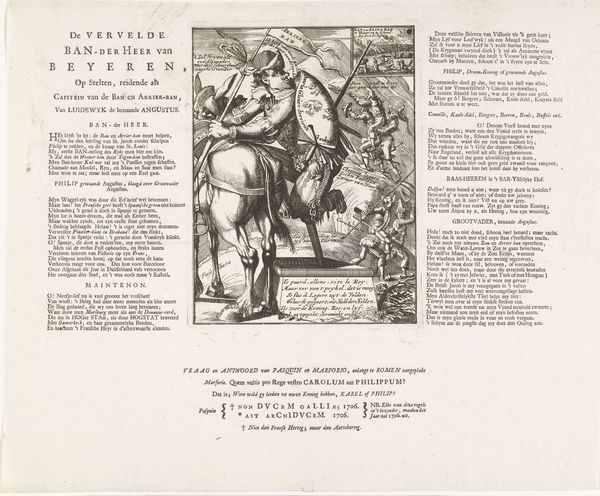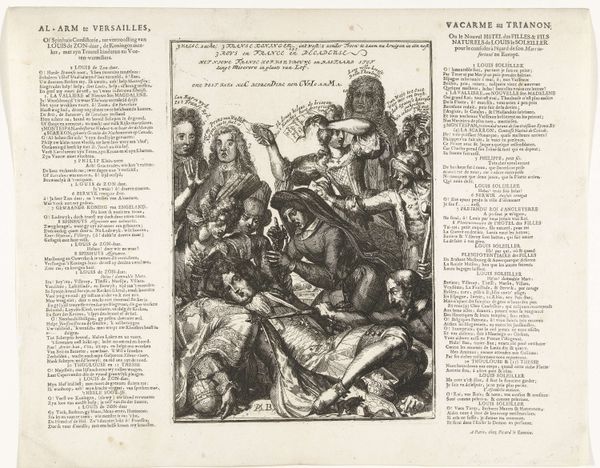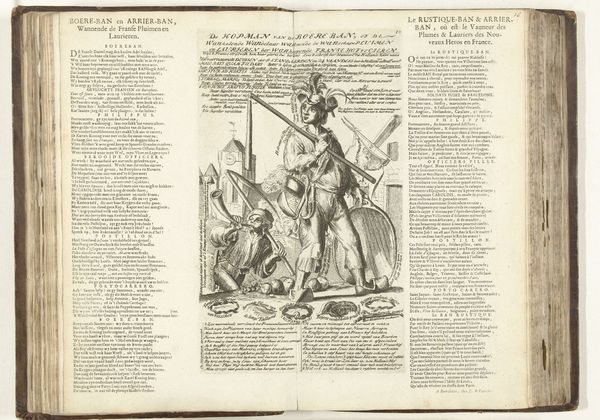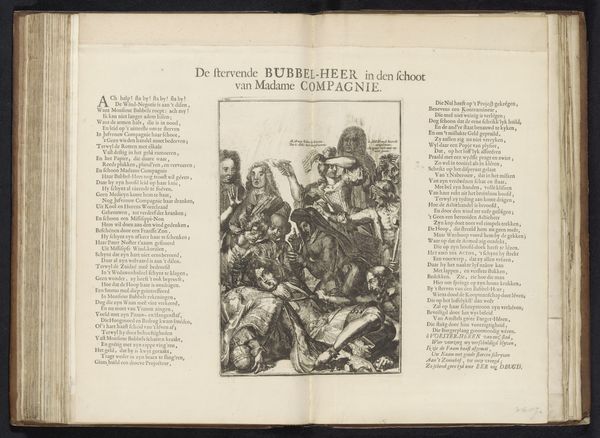
print, engraving
#
narrative-art
#
dutch-golden-age
# print
#
history-painting
#
engraving
Dimensions: height 373 mm, width 387 mm
Copyright: Rijks Museum: Open Domain
Curator: Welcome, let's discuss this engraving, "Het Testament van het Twaalfjarig Bestand, 1615", by Claes Jansz. Visscher, currently housed in the Rijksmuseum. Editor: Oh, it's dense, isn't it? Visually and, I suspect, thematically. My first impression is a feeling of… well, almost frantic energy contained within that small space. It's a whirlwind of tiny figures, objects, and text all vying for attention. What story does this little world tell? Curator: It’s an allegorical print commenting on the Twelve Years' Truce between the Dutch Republic and Spain, examining political tensions of that time. Visscher, through this piece, presents a narrative deeply intertwined with the socio-political landscape. You see the symbolic gestures and figures representative of various factions. Editor: Ah, that makes the controlled chaos make more sense. The lines almost feel etched with worry. Looking at the costumes, the gestures, you sense this simmering unease despite the promise of peace, a truce hangs precariously. Curator: Exactly. The artist employed engraving to convey this tension effectively. The stark contrast achieved by the precise lines, along with the detailed rendering, underscores the era’s precarious state of affairs, particularly between the warring states. Think about the process itself, that very act of carving and printing was linked to production and dissemination of knowledge. Editor: And those lines give such gravity, a monumentality in miniature. This detailed approach with such seriousness mirrors the high stakes. Now I'm noticing the inclusion of so much text that it could also almost function as commentary or critique. Curator: Indeed, those words directly involve viewers into debates regarding national identity, sovereignty, or religious beliefs. By using accessible print format and visual vocabulary the art piece was designed to stimulate the public debate in early modern Netherlands, especially those critical times that shaped what art was produced, and to what degree it impacted consumption! Editor: It does highlight a core tension doesn’t it, Curator? You can make an image to advocate for change and it still needs a way of being seen, disseminated to make an impact and encourage the public discourse you are mentioning, really remarkable. Curator: A key understanding for approaching art, Editor. A blend of artistic creation and consumption which underscores my original comments about process and materiality.
Comments
No comments
Be the first to comment and join the conversation on the ultimate creative platform.
